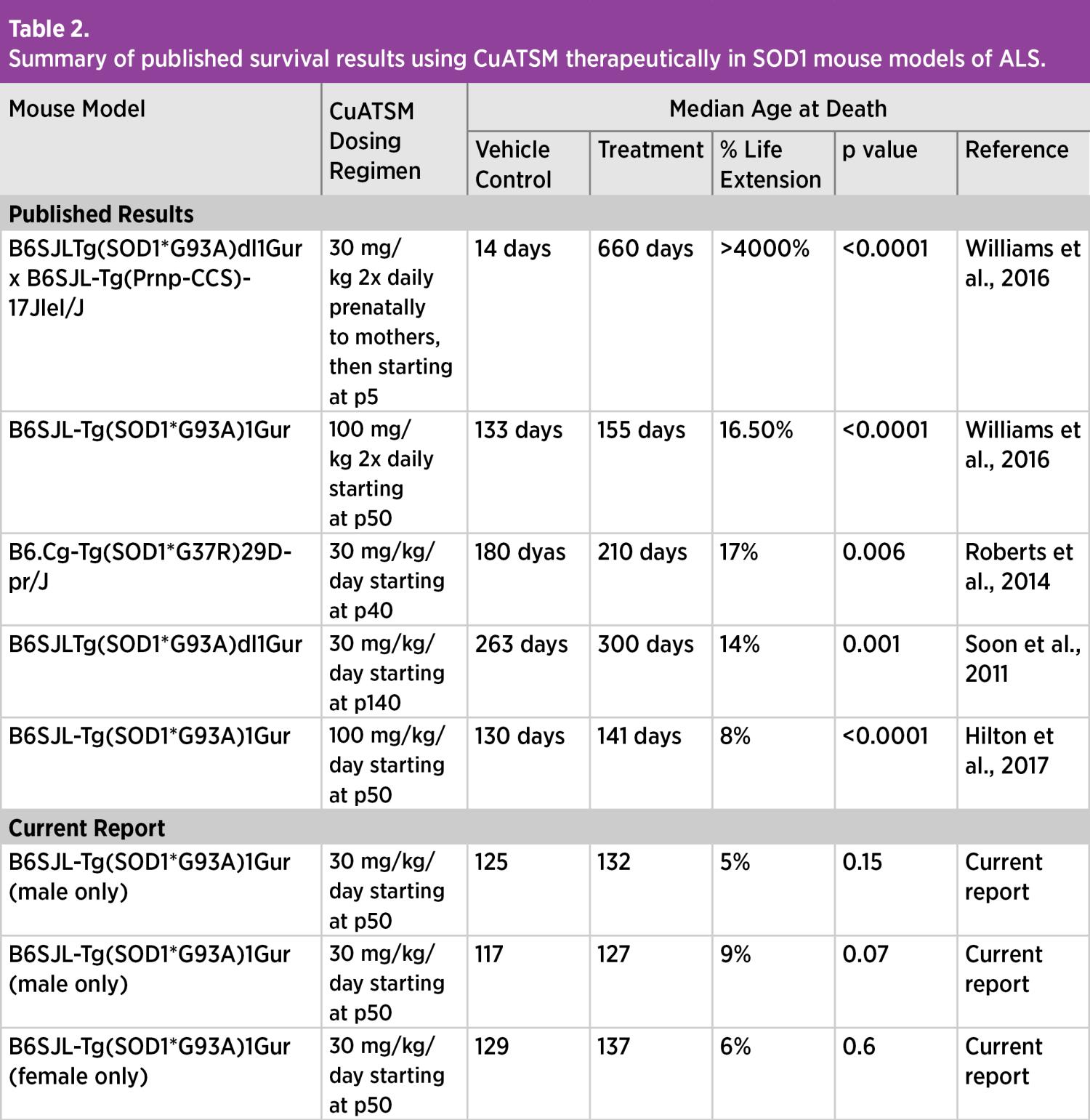This week, ALS Therapy
Development Institute scientists published results showing that they have
independently validated the efficacy of Copper ATSM (CuATSM) at slowing down amyotrophic
lateral sclerosis (ALS) disease progression in a mouse model of the disease.
This is the first time in 15 years of testing drugs rigorously that ALS TDI has
confirmed the efficacy of a proposed treatment for ALS that others have
previously published.
Two groups, one led by Dr.
Joe Beckman at Oregon State University (Williams, et al) and the other led by Dr. Peter Crouch (Roberts, et al) at
the University of Melbourne in Australia, have collaborated in recent years on
work showing efficacy of CuATSM in various SOD1 models of ALS. Currently, a
clinical trial is enrolling people with ALS/MND in Australia based on those
original results. ALS TDI looks forward to further preclinical and clinical
investigation with CuATSM and molecules with similar properties.
"We understand that we hold no monopoly on good ideas, so we look to the ALS and other research communities for promising results. An important part of what we do at ALS TDI is attempt to replicate promising results from other labs. For over 15 years, replication of published reports of efficacy by therapies in the SOD1 mice has eluded us. Here we see a clear exception. CuATSM modified disease for the better in anaggressive SOD1 mouse model of ALS and we thought it would be very important to share that result with the entire ALS community. Further, we thought it was important to inform the community in this paper that ATSM alone, with no metal engaged, has no effect in the model," said Fernando Vieira, M.D., Director of Research Operations and
Director of In Vivo Operations at the ALS Therapy Development Institute.
Vieira and his colleagues
at ALS TDI report on two different sets of experiments in the publication entitled
“CuATSM efficacy is independently replicated in a SOD1 mouse model of ALS while
unmetallated ATSM therapy fails to reveal benefits” published in International
Brain Research Organization journal, IBRO Reports, which provides open access
to its articles online. Sharing the data openly, freely, is of importance to ALS TDI.
A summary table in the
report outlines various published reports of CuATSM efficacy in mouse models of
ALS. The table, provided below, details the type of mouse used, the dosing
strategy applied, and several key outcome measures.

Overall (both genders combined),
onset of disease was delayed by 6 days in animals treated with CuATSM (N=32) at
ALS TDI compared to a control group (N=30). The slowing of disease continued
after disease onset. Animals treated with CuATSM tended to maintain their peak
body weight longer than those not treated, another sign that the progression of
the disease may be impacted with treatment. Finally, the median age at death
was 6 days older in CuATSM treated mice. While efficacy trends against survival
were more robust in males, statistical significance was not achieved overall.
However, the authors believe that since they used a relatively low dose of
CuATSM and explored its impact in the most aggressive SOD1 mouse model, the
trends found across both genders in all categories (onset, NeuroScore, peak
body weight and survival) support further preclinical and clinical research on
CuATSM.
In closing the discussion section of the IBRO Report, Vieira
et al state: “….it is encouraging that our independent laboratories at the ALS Therapy
Development Institute replicated the finding of CuATSM efficacy in an
aggressive mouse model of ALS. Previously published reports describing efficacy
of a variety of potential therapeutics in SOD1 mice have not been repeatable in
our labs using rigorously controlled testing methods, despite more than 15
years of testing. Thus, CuATSM treatment is an interesting and important
exception. A Phase I clinical trial of CuATSM in people with ALS is enrolling
and underway in Australia. We look forward to further preclinical and clinical
investigation with CuATSM and molecules with similar properties.”
For a list of additional publications from ALS TDI, click
here.
All the work mentioned in this paper was funded by the ALS community itself. ALS TDI is a nonprofit with the highest ratings on CharityNavigator.com. Please consider supporting ALS research being done by Dr. Vieira and the team
at ALS TDI by clicking here.
About the ALS Therapy Development Institute
The ALS Therapy Development Institute and its scientists
actively discover and develop treatments for ALS. The Institute is the world’s
first and largest nonprofit biotech focused 100 percent on ALS research. Led by
people with ALS and drug development experts, the charity understands the
urgent need to slow and stop this horrible disease. Based in Cambridge, MA, the
Institute has served as one of the leaders in sharing data and information with
academic and ALS research organizations, people with ALS and their families.
For more information, visit www.als.net.